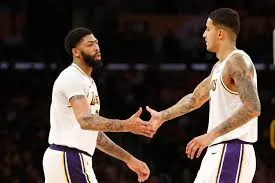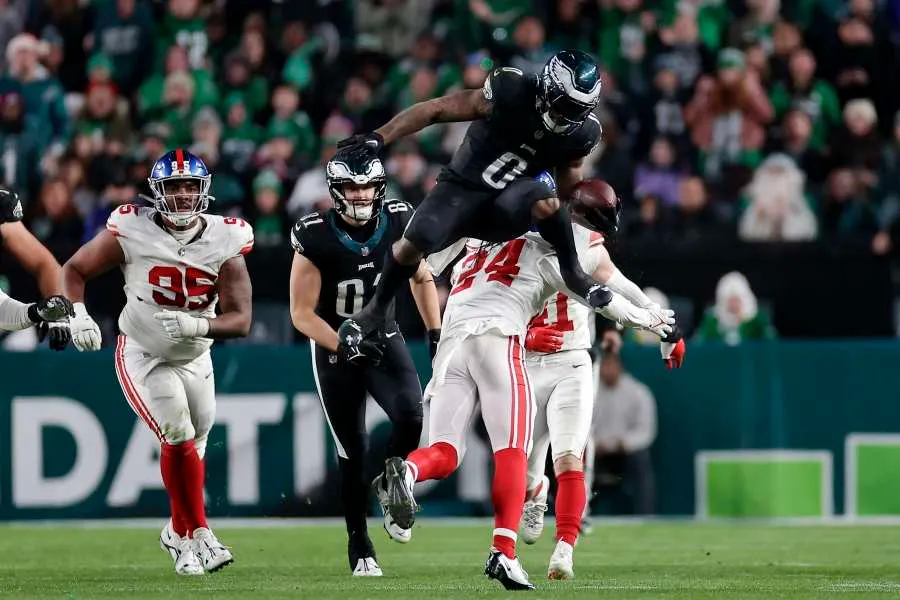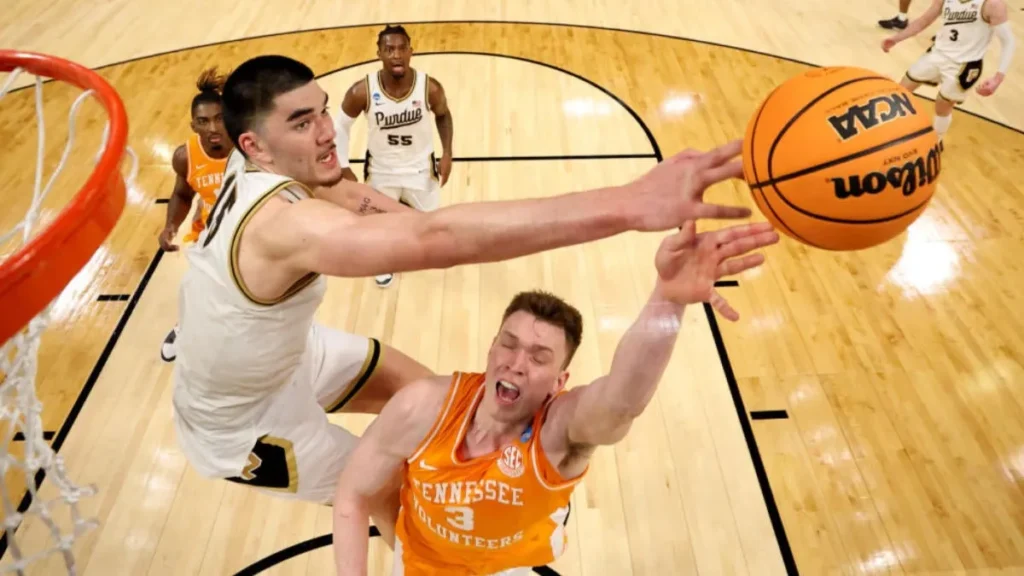Table of Contents
Introduction
If you’ve been following sports lately, you might have noticed a new trend that’s changing the game: XCenter platoons. These aren’t just buzzwords thrown around by analysts; they’re becoming a fundamental part of how teams build their rosters. But what exactly is a platoon system, and why is it such a big deal?
In simple terms, a platoon is when a team rotates players in a specific position—like the center spot—based on the situation. Instead of sticking with one starter, teams now mix and match their players to get the best possible performance against different opponents. It’s like having multiple tools in your toolbox and picking the right one for the job. Sounds smart, right?
So, why are teams jumping on the platoon bandwagon? Well, it’s all about maximizing the strengths of each player while minimizing their weaknesses. For example, one player might be great at defending but not so hot at scoring. Another might be the opposite—an offensive powerhouse but a bit of a liability on defense. By rotating them in and out based on what’s needed at the moment, teams can get the best of both worlds. It’s a strategy that’s proving to be incredibly effective.
But this isn’t just about tactics on the court or field; it’s also about building a roster that’s versatile and deep. In today’s sports world, where injuries are common and the competition is fierce, having a flexible lineup can be the difference between winning and losing. And that’s why platoon systems are becoming a staple in modern roster-building.
Whether you’re a die-hard fan or just someone who enjoys catching a game now and then, understanding how these platoon systems work will give you a new perspective on the strategies behind your favorite teams. Plus, it’s a fascinating look at how sports are evolving with the times. So, buckle up, because we’re diving into the world of XCenter platoons and why they’re taking the sports world by storm.

The Evolution of XCenter Platoons
From Single-Star Systems to Strategic Rotations
The idea of rotating players in and out of the same position might seem like a no-brainer now, but it wasn’t always that way. The concept of XCenter platoons has evolved significantly over the years, and it’s fascinating to see how this strategy has become a cornerstone in modern sports.
Back in the day, teams relied heavily on their star players, especially in key positions like center. These players were expected to carry the load for the entire game, no matter the situation or the opponent. But as the game got faster and more complex, teams started to realize that having just one go-to guy wasn’t always the best approach. This is where the idea of platooning started to take shape.
Early Experimentation and Adoption
Initially, only a few forward-thinking coaches experimented with platoon systems, often out of necessity rather than strategy. But as time went on, the benefits became clear. Teams that used platoons could adjust their lineups based on who they were playing against, making it much harder for opponents to predict and counter their moves. It was like adding an extra layer of strategy to the game, and who doesn’t love that?
The Impact of Analytics on Platoon Strategies
Then came the analytics revolution. Suddenly, teams had access to mountains of data that showed exactly how each player performed in different situations. This data-driven approach allowed coaches to fine-tune their platoon strategies even further, ensuring that the right player was on the court at the right time. It wasn’t just about gut feelings anymore; it was about cold, hard numbers.
The Blurring of Traditional Roles
As this approach gained traction, the traditional roles we once associated with positions like center started to blur. No longer was there just one star player holding down the fort. Instead, teams began to see the value in rotating players with complementary skills, creating a more dynamic and unpredictable game.
The Mainstreaming of XCenter Platoons
Today, XCenter platoons are a common sight in professional sports. They’ve moved from being a niche strategy to a mainstream approach, and they’re continuing to evolve as teams find new ways to exploit their advantages. Whether it’s through cutting-edge analytics, innovative coaching, or simply adapting to the changing pace of the game, XCenter platoons are here to stay. And as we’ll see in the next section, the benefits of this strategy are making a huge impact on how teams build their rosters.

Benefits of XCenter Platoons in Roster-Building
Increased Versatility and Depth
One of the biggest advantages of using XCenter platoons is the added versatility and depth they bring to a roster. By rotating players in and out of the center position, teams can take full advantage of each player’s unique skills and strengths. This approach allows teams to create a lineup that’s more adaptable and well-rounded. For instance, one player might excel at defense, while another might be a powerhouse on offense. By mixing and matching these skills based on the situation, teams can get the best performance out of every player. This depth becomes particularly crucial in long seasons or high-stakes games, where having multiple reliable options can make all the difference.
Enhanced Matchup Flexibility
Another key benefit of platooning is the strategic flexibility it offers. With a platoon system, teams can tailor their lineup to exploit the weaknesses of their opponents. If a team is up against a particularly tough opponent, they can bring in a player who matches up well against the opposition’s strengths. Conversely, if they’re facing a different type of challenge, they can switch to a player who’s better suited to that scenario. This adaptability makes it much harder for opponents to predict and counter a team’s strategy, giving the platooning team a tactical edge.
Mitigation of Injuries and Fatigue
Managing player health is a critical concern in any sport, and platooning can play a big role in addressing this. By rotating players, teams can keep their centers fresh and reduce the risk of injuries and fatigue. Instead of relying on one player to carry the load for the entire game, which can lead to burnout, platoons allow teams to distribute the workload more evenly. This approach helps to maintain high performance levels throughout the season and ensures that players are less likely to suffer from overuse injuries. It’s a strategy that not only improves individual player longevity but also enhances the team’s overall performance.
Case Studies: Successful Implementations of XCenter Platoons
Team A’s Championship Run
One of the most compelling examples of XCenter platoons in action is the story of Team A’s championship run. During this standout season, Team A leveraged a platoon system at the center position to great effect. By rotating players based on their strengths and the specific demands of each game, Team A created a dynamic and unpredictable lineup that kept opponents on their toes. Key players were used strategically to match up against different opponents, optimizing their performance in critical moments. This smart deployment of talent played a significant role in their successful campaign, showcasing how effective platoon strategies can be in achieving championship success.
Player B’s Career Resurgence Through Platooning
Another remarkable case is Player B’s career resurgence thanks to a platoon system. Once a promising talent whose career had hit a rough patch, Player B found new life in a platoon role. By being part of a rotation rather than a fixed starter, Player B was able to focus on areas where they excelled, such as defensive play or offensive bursts, without being stretched thin. This new role allowed Player B to shine in their areas of strength and regain their confidence. The platoon system not only revitalized Player B’s career but also demonstrated how this approach can help players maximize their potential and contribute significantly to their team’s success.

Comparative Analysis of Teams With and Without Platoon Systems
A comparative analysis of teams with and without platoon systems offers valuable insights into the effectiveness of this strategy. Teams that have embraced platooning often show improved performance metrics, such as higher win-loss records and better player efficiency ratings. These teams benefit from the strategic flexibility and depth that platoons provide, allowing them to adapt more effectively to different opponents and game situations. In contrast, teams that stick to traditional fixed roles may struggle with predictability and may not exploit the full range of their players’ abilities. This comparison highlights the advantages of platooning and its growing importance in modern sports roster-building.
Challenges and Criticisms of XCenter Platoons
Chemistry and Cohesion Issues
While XCenter platoons offer numerous benefits, they also come with their fair share of challenges. One major issue is the potential impact on team chemistry and cohesion. With players rotating in and out of the center position, it can be difficult for the team to develop a sense of unity and synchronization. Frequent changes in the lineup may disrupt the flow of the game and lead to inconsistencies in performance. Building strong on-court chemistry often requires time and continuity, which can be harder to achieve with a platoon system in place. Teams need to find ways to maintain cohesion and ensure that all players are on the same page despite the constant rotations.
Managing Player Ego and Expectations
Another challenge of platooning is managing player ego and expectations. In a system where roles are shared and players frequently switch positions, it can be tough to keep everyone motivated and satisfied. Star players, in particular, might struggle with the idea of not being the permanent starter or having to share time with others. This can lead to tension and frustration, especially if players feel their contributions are undervalued or if they have strong personal expectations of playing time. Coaches and team leaders must navigate these dynamics carefully to maintain a positive team environment and ensure that all players feel valued and motivated.
Logistical and Tactical Challenges
Implementing a platoon system also presents logistical and tactical challenges. Coordinating practice time and game rotations requires careful planning and can be complex. Coaches need to ensure that each player gets adequate time to practice and integrate into the team’s strategies. Additionally, adjusting in-game rotations on the fly can be difficult, especially in high-pressure situations where quick decisions are crucial. Teams must be prepared to adapt their strategies and manage the logistics of player substitutions effectively to avoid any disruptions during critical moments of the game.
The Future of XCenter Platoons in Roster-Building
Trends and Innovations in Platoon Strategies
Looking ahead, the future of XCenter platoons promises exciting trends and innovations. As sports continue to evolve, so too will platoon strategies. Teams are increasingly using advanced analytics to fine-tune their rotations, allowing them to make even more precise decisions about when and how to deploy their players. Innovations in data collection and analysis are expected to further enhance the effectiveness of platooning, enabling teams to better understand player performance and matchups. This could lead to more sophisticated platoon systems that adapt dynamically to game conditions, pushing the boundaries of how teams manage their rosters.
Potential for Expansion to Other Positions
The success of platoon systems at the center position raises the question of whether this approach could be applied more broadly to other positions. If platooning can offer significant advantages for centers, why not for other roles? Teams might start experimenting with platoons for positions like forwards or guards, using similar strategies to optimize performance and matchups across the board. This expansion could lead to even greater flexibility and depth in rosters, revolutionizing how teams approach lineup management and game strategy.

Long-Term Implications for Player Development
The rise of platoon systems could also have a lasting impact on player development. As teams increasingly adopt this strategy, younger players may need to adapt to a more flexible and dynamic role within the team. This shift could influence how players are trained and developed, with a greater emphasis on versatility and the ability to perform in various situations. The focus might shift from developing a single dominant skill to cultivating a well-rounded skill set that can thrive in a platoon system. This evolution in player development could lead to a new generation of athletes who are better equipped to handle the demands of modern sports.
Conclusion
Recap of the Significance of XCenter Platoons
As we’ve explored, XCenter platoons have become a crucial element in modern sports roster-building. By rotating players in and out of the center position, teams can maximize their lineup’s versatility, adapt to various opponents, and manage player health more effectively. This strategy allows teams to leverage the unique strengths of each player and adjust their approach based on game conditions, leading to improved performance and competitive advantage. The rise of platooning reflects a broader trend toward more dynamic and data-driven strategies in sports.
Final Thoughts on the Longevity of Platoon Strategies
Looking ahead, it’s clear that XCenter platoons are likely to remain a key strategy in sports for the foreseeable future. The benefits of platooning—such as enhanced matchup flexibility and roster depth—make it a valuable tool for teams seeking to gain an edge. However, as sports continue to evolve, platoon systems may also undergo further innovations and refinements. Teams will continue to explore new ways to optimize their player rotations and adapt to the ever-changing landscape of the game. Whether platooning becomes more widespread across other positions or evolves in new ways, its impact on how teams build their rosters and approach games will undoubtedly be significant.
In summary, XCenter platoons represent a powerful strategy in modern sports, offering a blend of versatility, flexibility, and depth. As teams and players adapt to this evolving approach, the role of platooning in shaping successful teams and strategies will continue to be a fascinating and influential aspect of the game.




